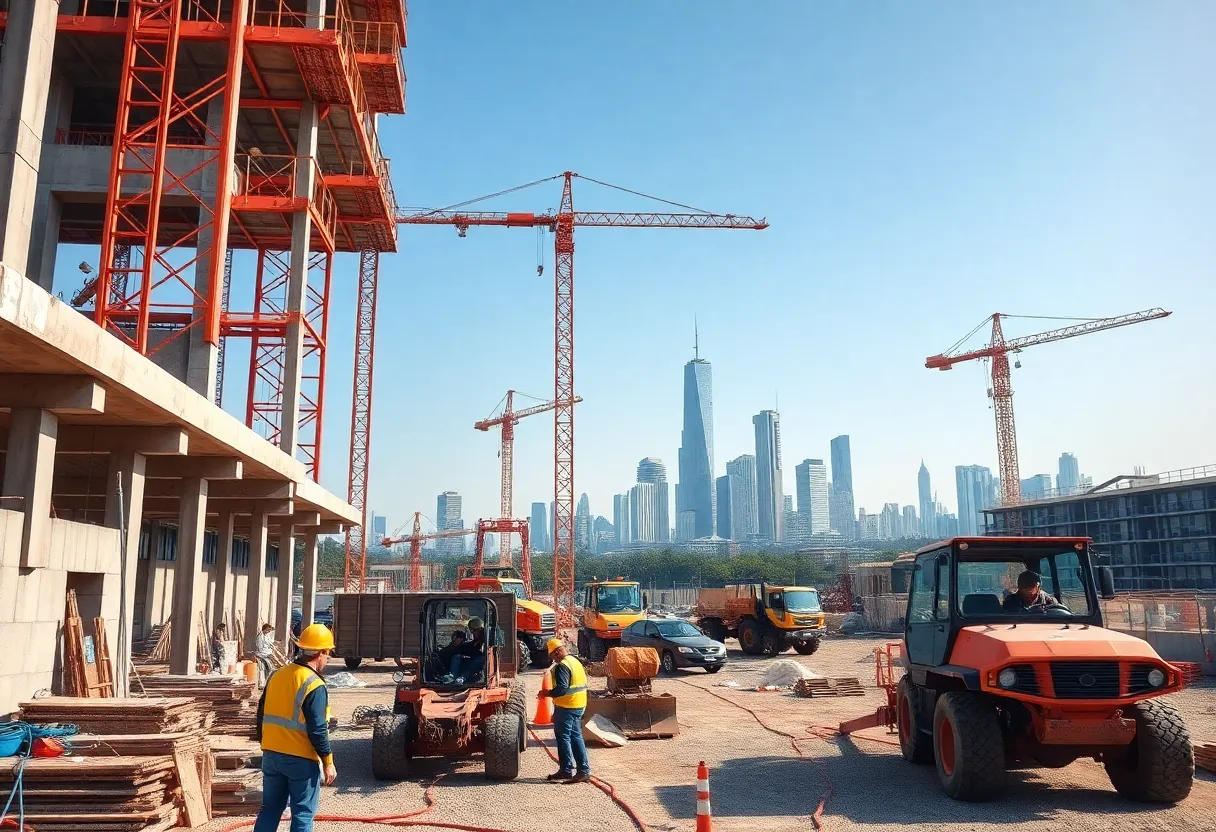News Summary
The construction industry is experiencing significant growth, with 234 out of 358 metropolitan areas adding jobs. However, the sector faces critical issues in finding skilled labor. As cities like Houston and Northern Virginia lead in job creation, the industry must address workforce retention and demographic shifts. With an anticipated increase in construction spending, ongoing training, and the need for attracting new talent are essential. Addressing these challenges will be crucial for sustaining employment opportunities as the industry evolves.
The Construction Industry: A Boom Amid Workforce Woes
The world of construction is buzzing with activity, and it appears that this trend is not slowing down anytime soon! Over the past year, construction employment has seen a remarkable uptick, growing in 234 out of 358 metropolitan areas, or approximately 65%. It seems like nearly two-thirds of metropolitan areas have added construction workers, making it an exciting time for those in the industry.
Finding Workers: A Tough Task
However, don’t let the numbers fool you! Despite this growth, contractors across the board are wrestling with a weighty issue: they just can’t find enough skilled workers to fill many hourly craft positions. The good news is that there’s a buzz around job creation, but the flip side is the concern for upcoming workforce challenges as we stride into 2025. Without targeted efforts to attract and retain talent, these hurdles are likely to amplify.
Leading the Charge
Across the nation, certain cities stand out in terms of job creation. For instance, the Houston-The Woodlands-Sugar Land area in Texas has taken the lead, adding a whopping 16,100 new construction jobs, representing a 7% increase. Northern Virginia trailed closely behind by generating 9,000 new jobs (11%), while sunny Miami welcomed 6,100 new jobs (10%). Other notable mentions include Orlando-Kissimmee-Sanford in Florida, which saw a gain of 4,800 jobs (5%), and Fort Worth-Arlington in Texas, netting 4,200 jobs (5%).
Surprising Gains and Declines
In an unexpected twist, Anchorage, Alaska, led the pack with the highest percentage increase in construction employment, skyrocketing by 17% with 1,800 new jobs. Fairbanks and Detroit also hosted significant upticks at 15% (400 jobs) and 15% (3,800 jobs), respectively. On the other hand, the picture isn’t all rosy. 63 metro areas reported a decline in construction employment, and another 61 areas showed stagnant job numbers. Sadly, New York City led the declines, shedding 7,800 jobs (5%). Sacramento and Portland-Vancouver-Hillsboro weren’t too far behind, losing 4,700 jobs (6%) and 4,200 jobs (5%) respectively.
Who’s Leaving the Industry?
This shifting landscape brings attention to some underlying demographic challenges. With a large number of seasoned workers nearing retirement, there is a pressing need to attract new talent. Notably, approximately one-third of construction craft workers are foreign-born, highlighting the industry’s reliance on immigrant labor.
The Education Gap
There’s another key issue to tackle: funding disparities. Currently, four-year college degrees receive four times more funding than construction-related careers. This has raised concerns within the industry about how to boost vocational and technical education. The construction sector is seeing a high turnover rate, especially among younger employees, with nearly 50% of workers aged 20-35 switching jobs in the last two years. Reasons for this include the search for better pay, more family time, companies that invest in employee growth, and escaping poor leadership.
Training and Retention Strategies
It’s clear that onboarding, career advancement pathways, and ongoing training are essential for keeping skilled labor in the fold. Alarmingly, a survey revealed that 46% of respondents receive training only once a year or less, indicating a significant gap in employee development. As construction spending is projected to exceed $2 trillion in 2024, the challenges of workforce shortages and rising costs loom large.
Looking Ahead: Tech and Trends
As we gaze into the future, market trends indicate a growing demand for data center construction and specialized trades like welding and electrical work. This increased demand only adds to the challenge of recruitment and retention. To tackle these issues, companies are considering various solutions such as enhancing training programs, improving company culture, and using social media to attract talent.
Wrapping Up
The message is clear: the construction industry needs to act fast! While the numbers show exciting growth, the ability to sustain this momentum heavily relies on addressing workforce challenges head-on. By investing in initiatives to boost training and improve working conditions, the construction field can create a path that leads to sustained employment opportunities for all!
Deeper Dive: News & Info About This Topic
HERE Resources
Michigan’s Infrastructure Shift: Electric Vehicle Battery Development
Livonia Community Pays Tribute to Former Mayor Dennis Wright Following His Passing at 72
Saab Commits $75M for New Munitions Plant in Grayling, Set to Boost Regional Economy and Employment
Saab to Launch $75 Million Munitions Facility in Northern Michigan by 2026
Wayne County Schools Seek Voter Approval for Critical Millage Renewal to Support Student Opportunities
Plymouth Township Primary Race Heats Up
Michigan Economic Boom Reflects Strength of Biden’s Policies, Improving Job Market and Manufacturing Sector
Aerial Photos Indicate Steady Advancement on Ford’s Massive 1.8M Square-Foot Battery Plant in Michigan
Additional Resources
- BuildWitt: Workforce Challenges in Construction Industry
- Deloitte Insights
- ABC: US Construction Employment Numbers
- Engineering News-Record (ENR)
- Wikipedia: Construction Industry








